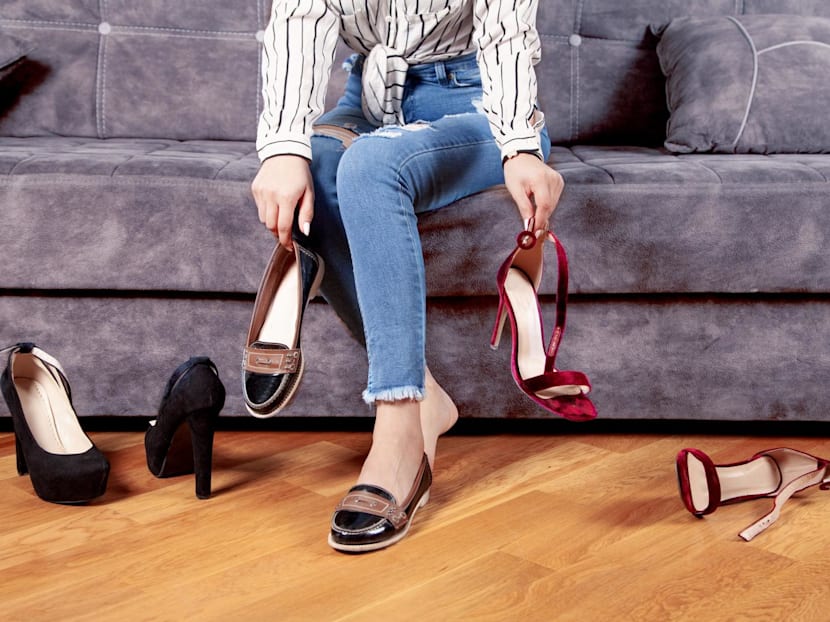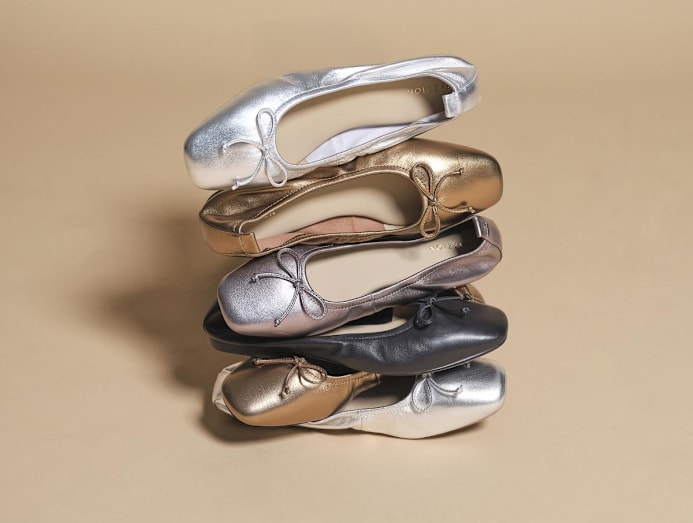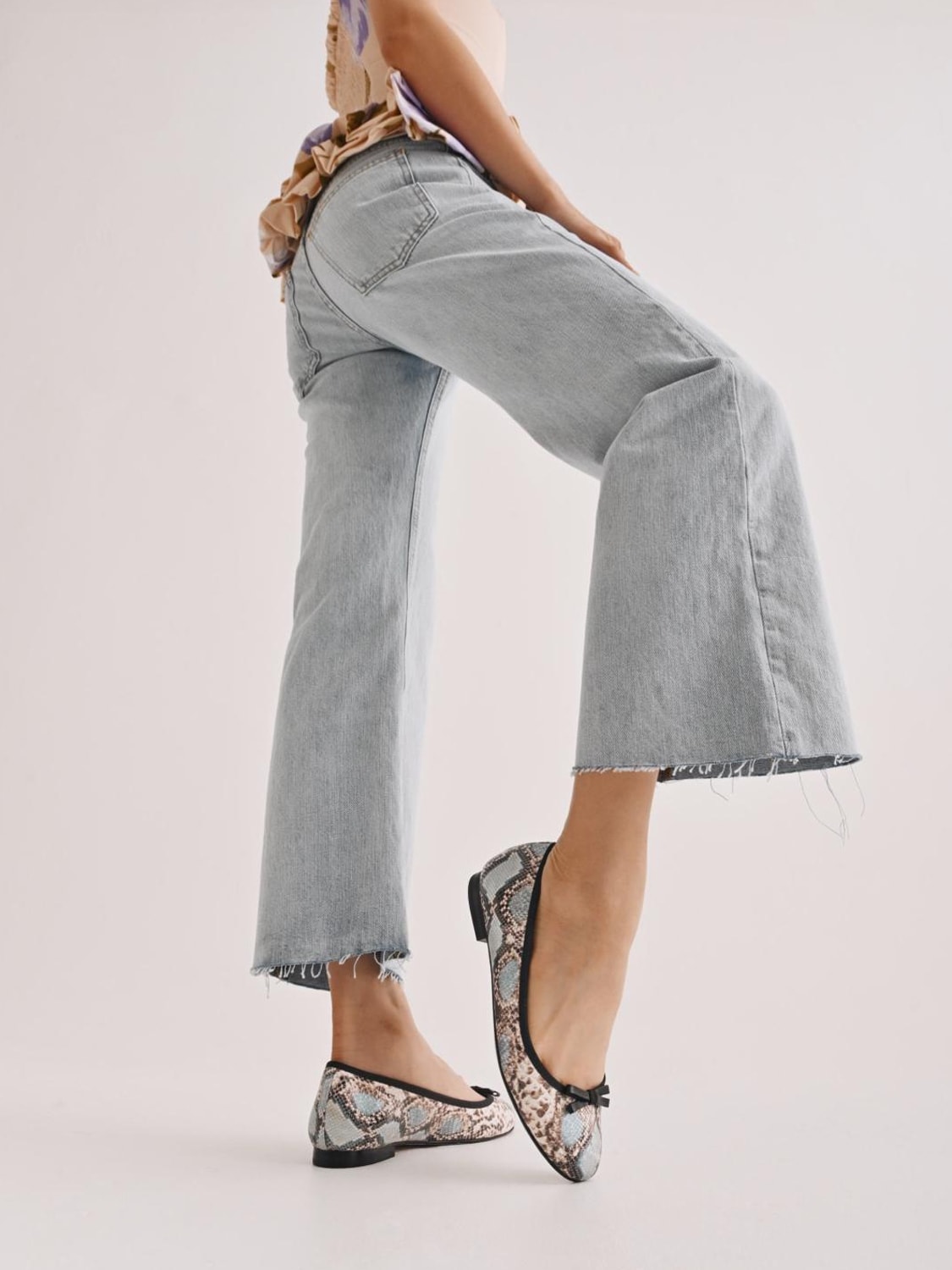Why women with large feet struggle to find shoes – and tips to get the right fit
Fact is, options for extended-size shoes remain limited here, but here’s how you can make the best of the choices available to you.

How to shop for bigger feet. (Photo: iStock)

This audio is generated by an AI tool.
For women who don’t fall within the average foot-size range in Asia, shopping for shoes is one difficult task. It’s not even about a lack in variety of designs. Sometimes, it can be quite impossible for someone with feet that are larger than a EU 41 to find in stores here a basic shoe, like a ballet flat, that fits.
Of course, there’s logic behind why most shoe brands in Singapore don’t produce women’s shoes in extra-large sizes – it simply makes sense to cater to sizes with the highest demand.
“The number of women who wear shoe sizes above EU 41 in Asia is relatively small, so for many brands, there isn’t enough demand to justify the significant cost of producing those sizes,” said Clara Han, the founder and creative director of local shoe brand Oleah.
Making shoes requires a unique last, or mould, for every size, width and heel height – it’s a costly investment, so brands are often cautious about extending their size range. “Larger brands typically look for minimum market demand before scaling up, which means such niche sizing is often best served by niche shoemakers that are specifically committed to that segment,” she added.

Han started her business making shoes in sizes EU 35 to 41, but had noticed a growing demand for sizes outside of this range. “We’ve had requests for extended sizes – ranging from as small as EU 30 to as large as EU 44. When we receive such enquiries, we evaluate them carefully – how often they come in, which styles are requested, and whether they’re timeless styles or trend-driven. Since then, we have expanded our size range to EU 32 to 43, taking into consideration these requests,” she said.
It’s something that home-grown shoe brand Pazzion has also observed. “With increasing globalisation and a more diverse population, we are seeing a growing demand for extended sizing, including larger sizes, which we believe deserves more attention. We listen to customer feedback and are exploring options to gradually expand our range to be more size-inclusive,” said the brand’s founder and director, Tom Ng. Pazzion currently carries sizes from EU 34 to 41.
WHY SHOE SIZING IS NOT PRECISELY STANDARDISED
With a shortage of large-sized footwear options available to them here, women are naturally compelled to go to American or European brands for shoes. One issue that many of them may face, since they’re likely to shop online for these, is that the footwear they purchase is often not true to size.
Han confirmed the possibility of such instances. “It's often due to differences in sizing systems and foot shapes targeted by different manufacturers. More importantly, size isn’t just about length – it also involves width, girth, toe shape and overall volume of the foot. Some brands cater to narrower feet, others to wider ones. Last-making and size-grading formulas also differ across regions and brands,” she explained.
The design and construction of the footwear can also contribute to slight fit variations between shoes of the same size. “As the fit of different shoe styles will vary, especially between pointed and round-toe silhouettes, we recommend that customers consider sizing up or down depending on their personal comfort and fit preferences,” said Ng.
Since it’s not possible to try on the shoes when shopping online, you’ll need to know which shoe styles are best purchased in a half or one size up. These include shoes with narrow toe boxes that provide less room for your toes; boots and sneakers – which typically are worn with socks; and high heels – a roomier fit is likely to be more comfortable since heels put pressure on your toes.

Han pointed out that it’s also important to distinguish between women who wear a larger size due to longer feet versus those with longer toes or a fleshier foot. “A woman may have the foot length of an EU 38 but require an EU 40 due to long toes or a fleshier build. The fitting needs of someone like that will differ from someone who is a true EU 40, so understanding these nuances is key to securing both style and comfort,” she said.
Shoe size, style and design are all factors that will contribute to how well footwear will fit. There’s no exact formula to finding the perfect fit, unless you have your shoes custom-made from scratch, but with trying more shoes of different styles over time, you should come to have a better understanding of the types of footwear that are better suited to your feet.
SHOE STYLES THAT SUIT LARGER FEET
While women with large or long feet should confidently explore a variety of shoe designs, there are certain styles that can be more flattering for your feet and also provide them with greater comfort.
“Many women with larger feet are tall or have wider builds, which means that blockier heels can provide better balance and support. If you don’t like the look of block heels, we’d suggest a slightly thicker stiletto to offer a balance between support and elegance,” said Han.
Ng pointed out certain design elements that may accentuate foot length and size, such as extremely narrow or sharp pointed toes or ultra-thin horizontal straps. “Instead, styles with an almond-shaped toe box or wider vamp coverage can be more flattering, while offering higher levels of comfort. Women with larger feet often need enhanced arch support, which cushioned insoles can help provide,” he noted.
Where comfort is concerned, the material of the shoe also counts. “Choosing full leather shoes – where the upper, lining, and outsole are all leather – also makes a significant difference. These materials naturally stretch and mould to your feet over time, offering a more personalised fit. Shoes constructed from non-leather materials like PU or fabric typically lack the flexibility and durability of genuine leather,” said Han.
GOING CUSTOM? HERE ARE THE OPTIONS
Customisation can solve a host of other fit issues, besides allowing you to have shoes made in your size and preferred design. However, a bespoke service – which provides full personalisation and includes a custom last made for you – is highly expensive, going up to thousands of dollars for a pair.
There are less complex levels of customisation that do not involve a custom last, and are therefore more affordable. According to Han, made-to-order or custom-fit ready-to-wear are two types of services that can be an option for women looking for extended-size shoes, provided that the brands offering them already have lasts in your size.
Made-to-order shoes utilise the brand’s existing lasts, with custom choices for colours and materials, and usually a selection of designs to choose from. The custom-fit shoes allow for fit adjustments on ready-to-wear shoes, and is the most accessible option of the above. If buying ready-made shoes isn’t working out for your feet, whether in terms of fit, sizing or style, these could be avenues to explore.




